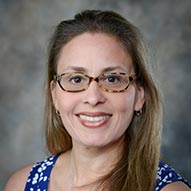Dallas
214-456-2793
Fax: 214-456-5885
Plano
469-303-4200
Fax: 469-303-4225
Request an Appointment with codes: Sleep Center
214-456-2793
Fax: 214-456-5885
469-303-4200
Fax: 469-303-4225
Request an Appointment with codes: Sleep Center
Oxygen titration is used as part of a sleep study to determine blood oxygen saturation (SPO2). Oxygen titration can be used again as a treatment for sleeping disorders such as obstructive sleep apnea syndrome (OSAS).
Oxygen titration allows doctors to determine a patient's baseline blood oxygen saturation. When children undergo a sleep study, one of the tests they receive is continuous positive airway pressure (CPAP) titration. Low levels of oxygen may mean a child's excessive daytime sleepiness or insomnia is due to a disorder such as obstructive sleep apnea syndrome (OSAS).
While some kids may have excessive daytime sleepiness, younger children may have daytime symptoms such as
In severe cases, children may display a failure to thrive or have symptoms of right-sided heart failure.
Around 2% of children have obstructive sleep apnea syndrome (OSAS). Besides making it difficult for your child to sleep, OSAS can reduce oxygen levels in the blood and may even be life-threatening. Oxygen titration is a procedure that can both diagnose and treat kids with OSAS.
If your doctor suspects an underlying sleep disorder, he will refer you to a specialist for a sleep study. During the sleep study, your child will spend the night in a sleep lab. Part of the study, known as CPAP titration, measures how much oxygen is in your child’s blood as well as if her airways stay open during sleep. Sometimes sleep studies are split over two nights to test your child both with and without oxygen titration. If titration allows your child to sleep normally, the sleep specialist may prescribe ongoing titration at home.
In children, obstructive sleep apnea syndrome (OSAS) can be due to small airways or enlarged tonsils. Besides snoring, symptoms of sleep apnea may include pauses in breathing that can last from ten seconds to a few minutes, several times an hour. Continuous positive airway pressure (CPAP) titration during the sleep study can tell doctors whether your child needs oxygen at home.
If she determines that oxygen titration is the right treatment, the sleep specialist will prescribe a CPAP machine for your child. You should work closely with the doctor to determine the right settings and comfort level. Masks can be custom-made to fit your child.
Using a CPAP machine can be a difficult adjustment for many children. Doctors recommend desensitizing infants and young kids to get them used to the process. Daytime desensitization includes
If the mask falls off during the night (or your child removes it), attempt to replace it without waking your child.





If the sleep specialist suspects OSAS, she will use a CPAP machine to deliver oxygen to your child through a mask. While your child sleeps, a technician or respiratory therapist will check his oxygen levels using oxygen titration and adjust the flow of air to find the right setting. Normal blood oxygen saturation is between 97-99% for most kids.
An initial CPAP titration is only performed as part of a sleep study (polysomnography). Your child may qualify for a sleep study if she has ongoing sleeping problems that interfere with her life. Children with sleep disorders, including OSAS, often have excessive daytime sleepiness or behavioral problems. If your child is having persistent trouble sleeping, see a doctor.
Continuous positive airway pressure (CPAP) is applied using a special machine. The CPAP machine delivers air through special hoses and a latex mask designed to fit your child’s face.
Around 2% of kids have OSAS, which can be due to small airways or enlarged tonsils. Oxygen titration using a CPAP machine is rarely used on kids with other sleep disorders.
CPAP titration is part of an overnight sleep study (polysomnography). Technicians can adjust the amount of oxygen to see if it improves your child’s SPO2 levels and determine if she’s sleeping better.
Normal blood oxygen saturation levels are between 97 and 99%. Anything below 90% suggests a breathing problem that can be treated with oxygen titration.
Children who adjust to using a CPAP machine at home usually sleep better. Treating OSAS and other sleep disorders can improve concentration, behavior and learning during the day.